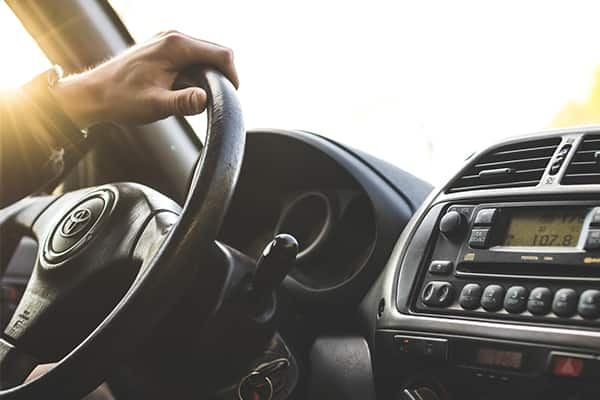Let's suppose you're driving a car that no longer has good road manners and handling. It has a pull to one side, excessive wander, a vibration, or other irritating habits on the highway, and it just doesn't drive like it used to. What's causing these problems, anyway?

There's a lot of confusion about suspension and steering issues, and the truth is that sometimes a problem can have several potential causes—some serious, and some maybe not so much. Let's try to set the record straight on front-end problems.
Even if you're driving a car from the '50s, the front suspension and steering is a complex system. Think of it as a network of parts and linkages that are designed to work together to provide a smooth ride, predictable handling, and stable straight-line performance on the highway. The designs of steering linkages can vary, but here's a list of some typical steering and front-end components, along with what they do.

Pitman arm
This is the steering component that's attached directly to the steering box. Its job is to take the rotation of the steering shaft and convert it to horizontal movement for the rest of the steering linkage. The Pitman arm is connected to the drag link with a ball-and-socket joint.

Drag link
The drag link is the connection between the Pitman arm and the steering linkage, or, in some cases, to the tie-rod assembly. Rack-and-pinion steering setups (found on most cars, minivans, and crossovers) typically do not have a drag link and use a center link instead. The ends of the drag link are wear points, and excessive wear on these parts can affect alignment and stability. On some vehicles, the drag link ends are actually repairable or replaceable.

Idler arm
The idler arm is typically connected to the drag link, with its other end connected to a frame rail. It supports the drag link and is another wear point. On idler arms that are equipped with grease fittings, there's a maintenance interval for lubrication.

Tie rods and tie rod ends
Tie rods are what actually keep the wheels straight and then determine direction when the time comes. The inner tie rod ends are close to the center line of the vehicle and consist of a straight ball-and-socket joint. Tie rod end wear is a major cause of steering and alignment problems. Front suspensions are usually comprised of a pair of upper and lower control arms, connected by ball joints and a shock absorber inside a coil spring. The alternate front suspension design is a MacPherson strut, which does away with the upper control arms and instead makes the steering knuckle integral with the shock absorber assembly. MacPherson struts are a common design on minivans, cars, and crossovers and usually go with a rack-and-pinion steering setup.
Signs of Front End Wear
Steering wheel pulls to one side: It's easy to jump to a conclusion when your car develops a strong pull to one side while driving in a straight line, but there can be several causes—even something as simple as an underinflated tire. A dragging brake caliper can also cause a pronounced pull to one side and is easily diagnosed by just feeling the wheel for excessive heat buildup. Of course, a pull can also be caused by poor alignment, which can result from excessive wear on front-end components like the tie rod ends and Pitman arm.
Note: Without any steering input, a wheel that's only 1/8-inch off of ideal alignment angles would cause your vehicle to drift 28 feet from a straight line over the course of a mile.
Steering wheel shimmy: A side-to-side shimmy can be caused by worn steering components, a bent rim, or an out-of-balance wheel. Vibration in particular can just about always be traced back to an out-of-balance wheel.
Excessive wander and poor roadholding: If your steering feels "loose" with excessive play, in many cases it's because of wear in the steering rack or steering box. Other causes can include worn tie rod ends or worn idler arm, sway bar, or Pitman arm bushings. An unpredictable wander that requires lots of correction with the steering wheel can mean that your ball joints are worn and about to fail.
Uneven tire wear: If there's one sure sign of steering and suspension problems, it's uneven tire wear. When the front tires are out of alignment spec, it means that there's a tire that's trying to steer the vehicle in a different direction and is constantly being dragged down the road by the other tires. The four main alignment angles are camber (the inward or outward tilt of the top of a wheel as seen from the front), caster (fore-and-aft position of the wheel), toe-in (the inward tilt of a wheel as seen from above), and toe-out (opposite of toe-in). Think of someone whose normal gait is to walk with one foot skewed to the side—that person's shoes are going to wear unevenly, and that's not unlike what happens with tires. A "cupped" wear pattern can indicate worn shock absorbers, a scalloped or "feathered" effect can come from a camber/caster problem, and wear at the inside or outside edge of the tire means a toe-in/toe-out issue.
Your car has more than 30,000 parts that all work together to get you down the road safely. When you suspect something's wrong with your front end, don't jump to conclusions—start out with the simplest stuff, which would be a check of your tire pressure!








